Are you on the hunt for the perfect engagement ring? One of the most important decisions you’ll face is whether to opt for a high setting or a low setting. This simple choice can significantly impact the ring’s durability, wearability, and overall sparkle. Don’t worry; this guide will help you make an informed decision.
What is a High Setting Engagement Ring?
High setting engagement rings feature a center stone that sits prominently above the band, creating a dramatic and eye-catching look. You can easily identify a high set ring by its side profile; if the stone protrudes higher than your finger, it has a high profile.
For more tips on choosing the right engagement ring online, read our Guide to Buying Engagement Rings Online.
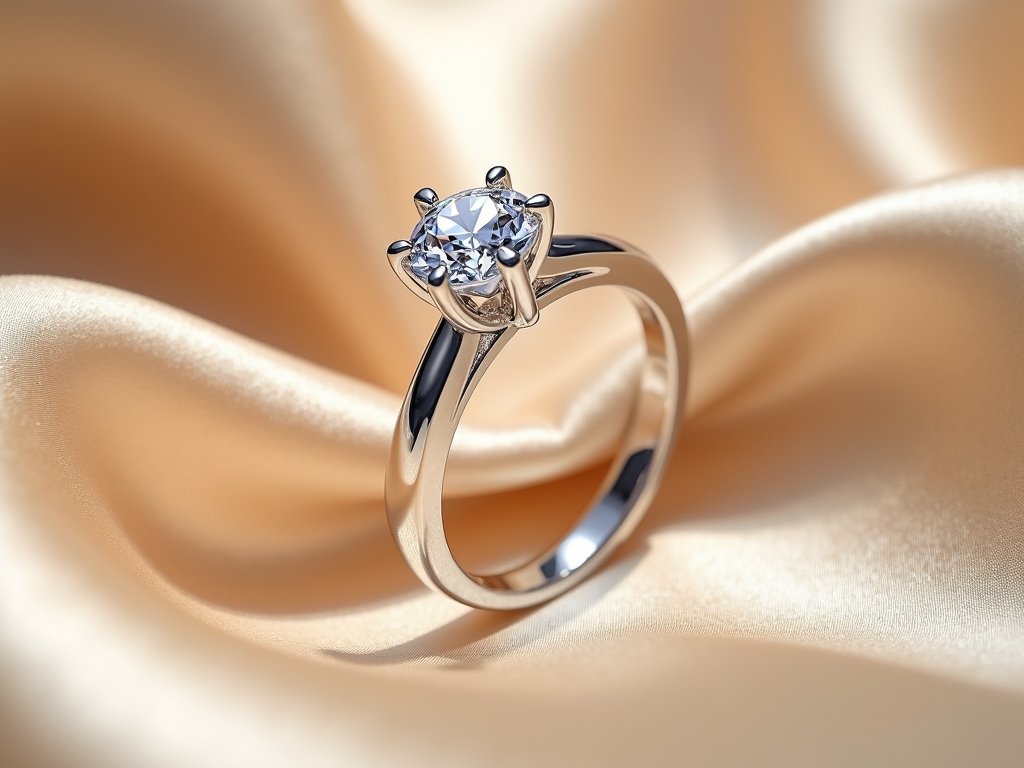
Pros of Choosing a High Profile Setting:
- Showcase Your Center Stone: High settings highlight the center stone, making it the focal point. The elevated position allows more light to pass through, enhancing its brilliance and sparkle.
- Versatility: High settings are compatible with various designs and stone shapes, making it easier to find a ring that matches your personal style and a wedding band.
- Illusion of Size: A high setting can make a diamond look larger, especially when paired with a thin band.
Cons of Choosing a High Profile Setting:
- Prone to Damage: The elevated stone is more susceptible to bumps and scratches, making it less durable for everyday wear.
- Practicality: High settings are more likely to catch on clothing, hair, and other items, which can be a nuisance for those with active lifestyles.
- Lifestyle Considerations: If you work with your hands or lead an active lifestyle, a high setting might not be the best choice, as you may need to remove the ring more frequently.
What is a Low Setting Engagement Ring?
Low setting engagement rings feature a center stone that sits closer to the band, offering a more understated and secure profile. These rings often incorporate intricate designs, such as filigree and accent stones, to add visual interest.
If you’re concerned about when to remove your ring for safety and longevity, check out our Guide on When to Take Off Your Engagement Ring.
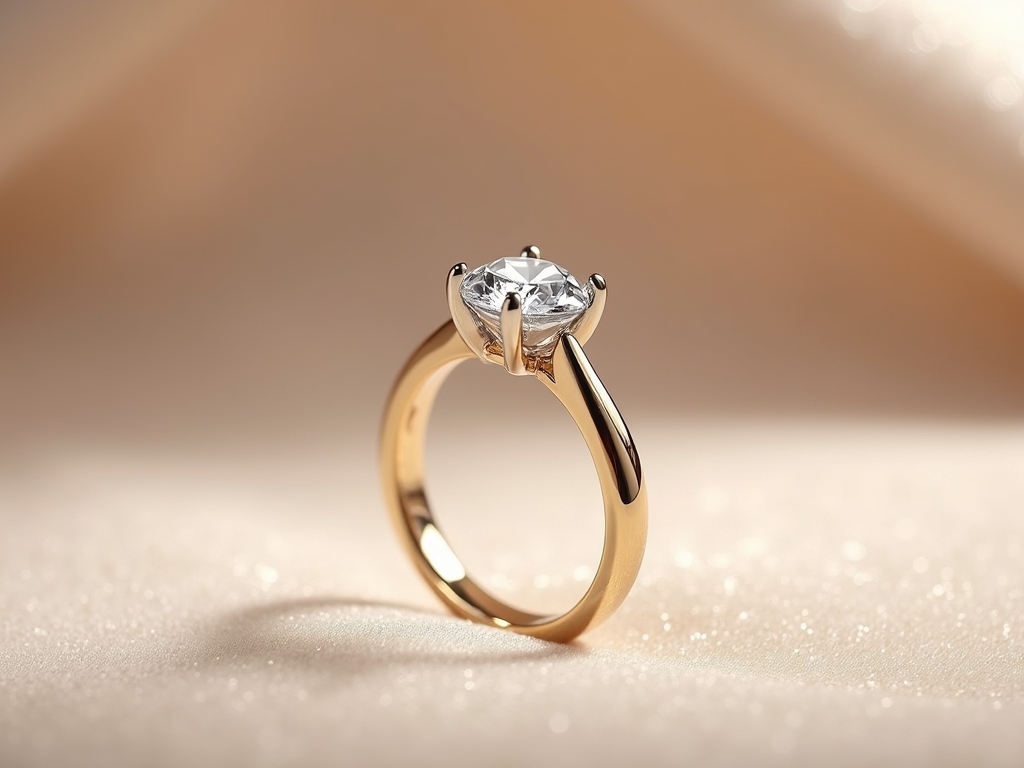
Pros of Choosing a Low Profile Setting:
- Comfort and Durability: Low settings are more comfortable for daily wear and less likely to catch on clothing or get damaged.
- Practical for Active Lifestyles: If you have an active lifestyle or work with your hands, a low setting is a safer and more practical choice.
- Modern and Sleek: Low settings offer a contemporary look that is popular in minimalist and modern jewelry designs.
Cons of Choosing a Low Profile Setting:
- Reduced Sparkle: While still beautiful, low settings may not capture and reflect light as effectively as high settings, potentially reducing the stone’s brilliance.
- Smaller Appearance: A low setting can make a smaller diamond look even smaller, so it might not be the best choice if you want to create the illusion of a larger stone.
Does a High Setting Make a Diamond Look Bigger?
Yes, a high setting can make a diamond look bigger, especially when paired with a thin band. However, if your stone is 0.5 carats or less, a high setting might emphasize the small size. If you want to create the illusion of a larger stone without a high setting, consider these alternatives:
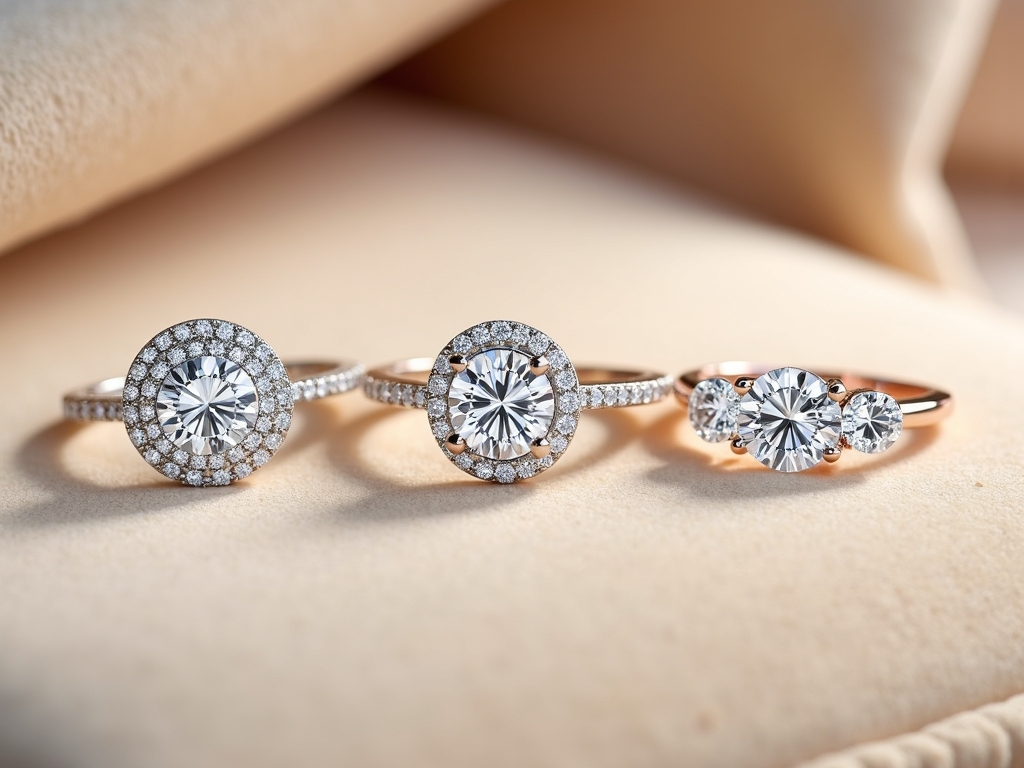
- Halo Setting: A ring with a halo of smaller diamonds around the center stone can make it appear larger and more dramatic.
- Three-Stone Setting: Pairing the center stone with two side stones adds extra sparkle and can create a more substantial look.
- Metal Choice: While white gold or silver is often believed to enhance the appearance of a diamond, a rose gold or yellow gold band can also provide a dramatic contrast, making the stone look bigger.
Popular Engagement Ring Setting Types
By now, you should have a good idea of which style you prefer. Here are some of the most common settings for high and low profile engagement rings:
Top High Profile Engagement Ring Settings:
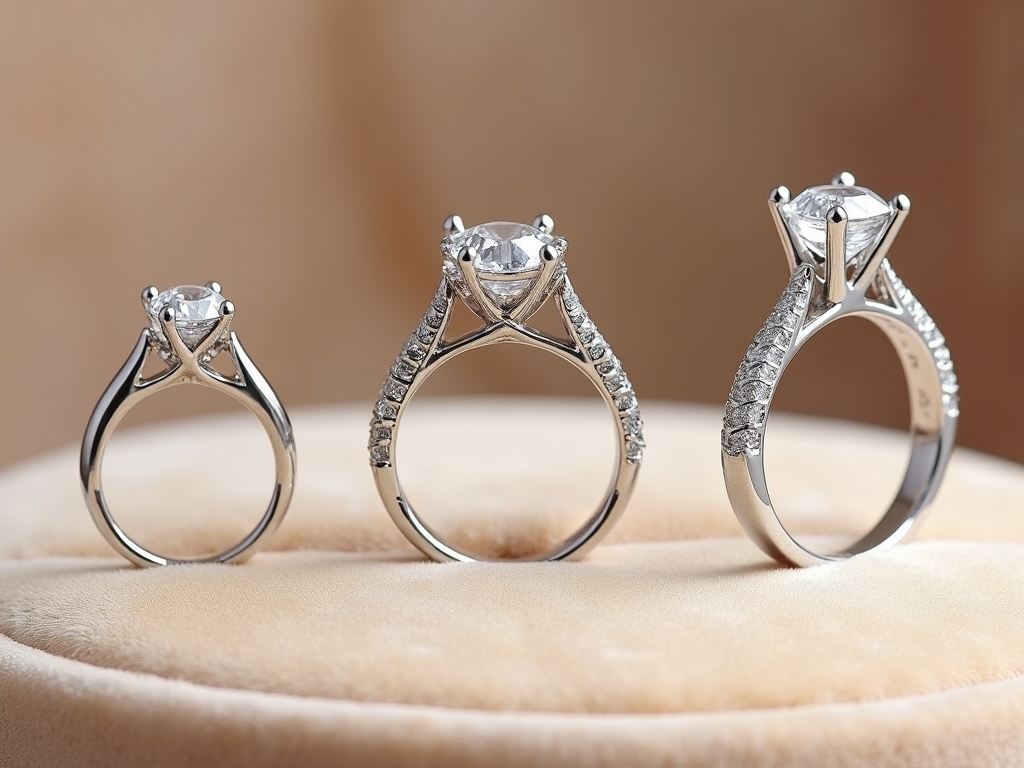
- Trellis Setting: A vintage-inspired design with four prongs woven in a cross pattern, providing a secure and elegant look.
- Cathedral Setting: Sophisticated and timeless, this setting elevates the center stone above the band using metal arches, creating a grand and elegant appearance.
- Prong Setting: Versatile and stylish, this setting uses four or six prongs to securely hold the center stone. Four prong settings allow more light to pass through, while six prong settings offer more security.
Top Low Profile Engagement Ring Settings:
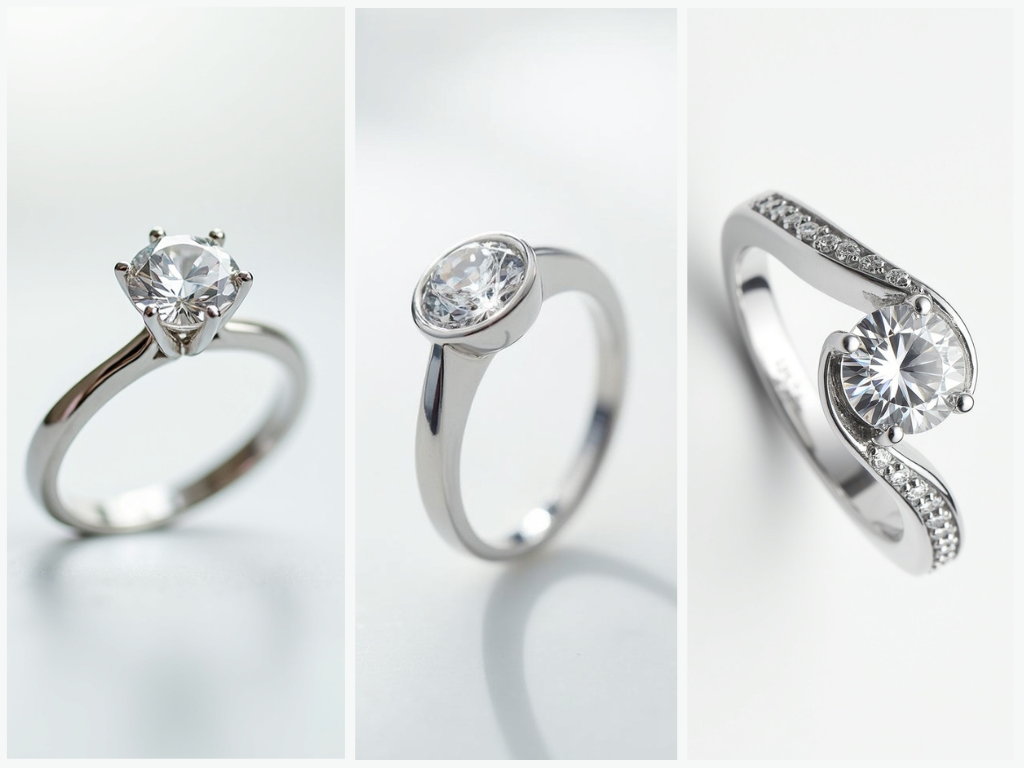
- Solitaire Setting: A minimalist’s dream, this setting features a single center stone held by prongs, offering maximum brilliance and easy maintenance.
- Bezel Setting: Ideal for those who prioritize security, this setting encases the stone in a ring of metal, providing excellent protection but slightly reducing brilliance.
- Tension Setting: A unique and modern design where the gemstone is held in place by the band itself, creating a floating look and allowing light to pass through for maximum sparkle.
Conclusion
Choosing between a high setting and a low setting engagement ring ultimately depends on your personal preferences, lifestyle, and budget. Consider the pros and cons of each style to make the best decision for you. Whether you opt for a dramatic high setting or a practical low setting, the most important thing is that your engagement ring reflects your love and commitment.
For more expert insights, check out our Guide on How Much to Spend on an Engagement Ring.


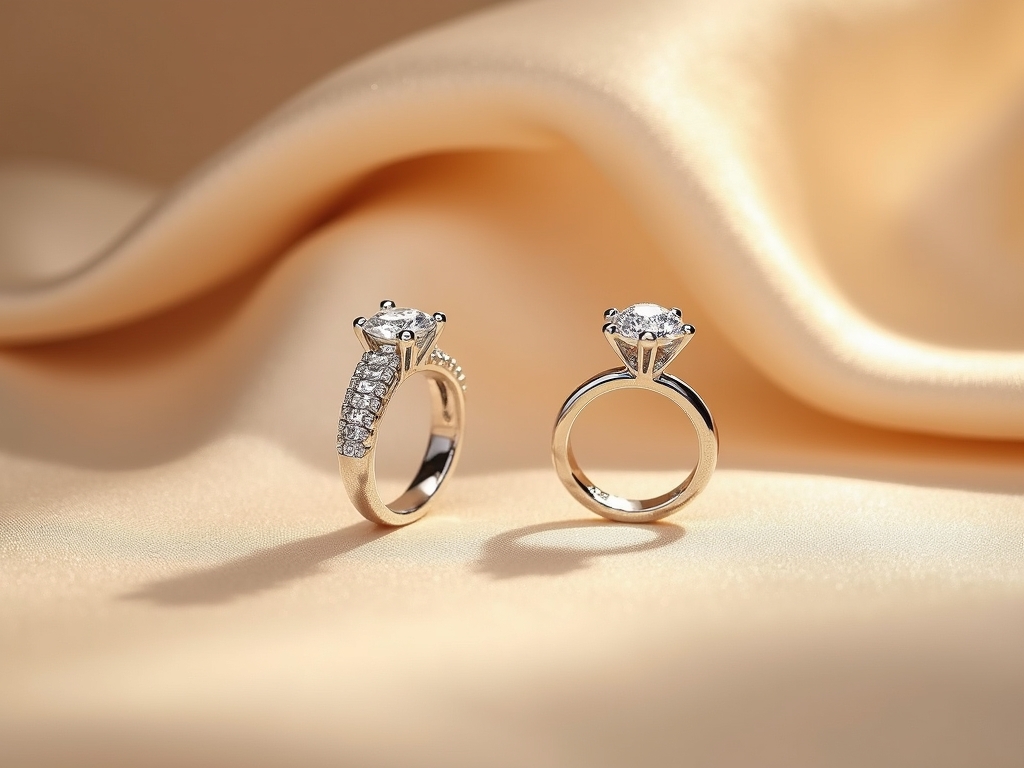
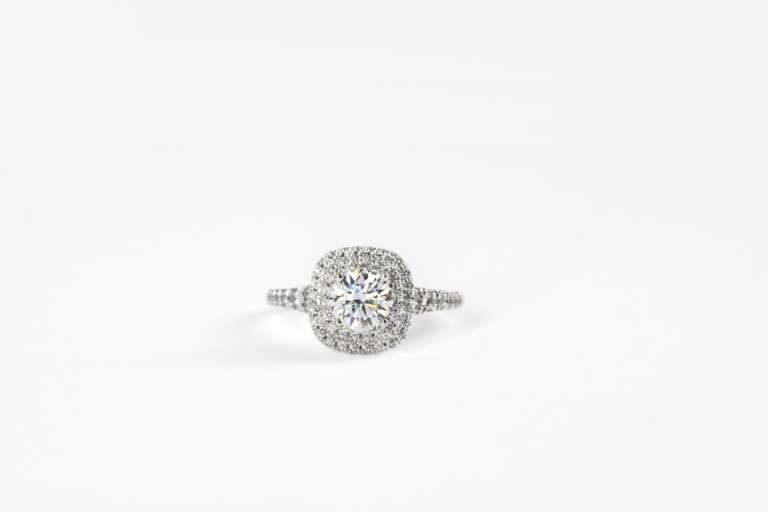
Leave a Comment